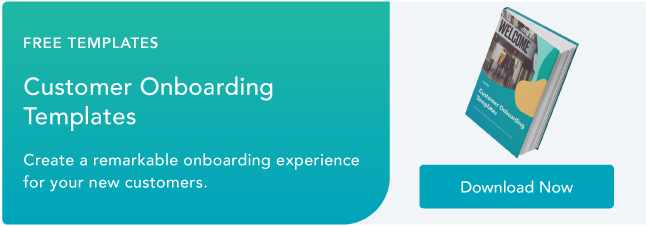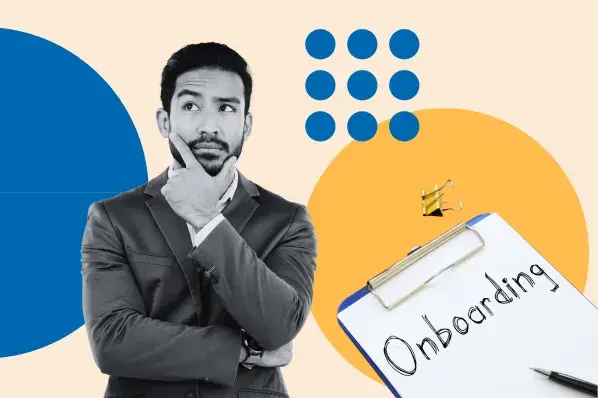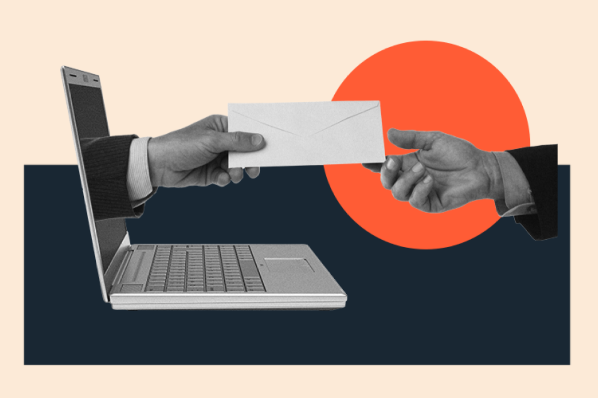In this post, let's review what an automated customer onboarding process looks like and how to automate your own customer onboarding according to HubSpot onboarding specialists.
Table of Contents:
- Automated Onboarding Process
- Benefits of Automating Onboarding
- How to Automate Customer Onboarding
- The Future of Customer Onboarding
Automated Onboarding Process
Automated onboarding makes it easier for new employees or customers to become integrated into your business. You can use software like HubSpot to automate your introductory workflows and repetitive tasks. For example, automating training schedules and first day reminders are just a few ways to save time and resources during the onboarding process.
To explain further, the video below explains what onboarding automation is along with four strategies to automate the user onboarding process.
The strategies you use to automate onboarding for new employees and new customers could look very similar (or entirely different) depending on your industry. Either way, you'll go through the steps of mapping out the journey, creating profiles, and identifying the different phases of your automation program.
But with employee onboarding automation, new hires will likely be more focused on getting integrated with their teams, completing on-the-job training, and filling out human resources paperwork.
On the other hand, customer onboarding automation will allow new customers to connect with your customer success team and learn how to use your product or service.
So at this point, you might be thinking, "All of these automation processes sound overwhelming, why should my company do this?"
Let's get into that next.
Benefits of Automating Onboarding
We reached out to HubSpot experts to explore the benefits of automating your onboarding process. We'll explore a few below.
It helps you better allocate your internal resources.
Sherry Ng, a previous customer onboarding specialist at HubSpot, says, "The strongest reason for why automation exists is to help people.”

They continue, "In the case of customer onboarding, automation helps both the company's internal onboarding team and its customers. By taking on repeatable but helpful tasks, automation allows for companies to focus their human resources towards impactful work that helps customers succeed, such as strategic consultation."
Automating onboarding allows businesses to leverage their internal resources beyond the manual, repetitive tasks like sending emails and scheduling consultations.
It helps your company grow.
Automation can also help your company scale.
Cliona Dowling, another former customer onboarding specialist at HubSpot, says, "Companies should use automated customer onboarding so that they can scale their business. Automating repetitive tasks and items that all customers need to do means that human-led services can focus more on having strategic conversations with the customers who need it."
And more time for strategic conversations means more time to focus on growing your business.
It helps your onboarding teams prioritize their time.
Ana DiMarino, an associate product manager at HubSpot (formerly, senior customer onboarding specialist), adds, "As an onboarding specialist on a team that used a hybrid approach to automating onboarding, I no longer had to spend a lot of time on administrative tasks like sending repetitive introduction emails and trying to get customers to engage with onboarding and could instead focus my time on helping our customers."

Freeing up your customer onboarding specialists' time is really one of the main benefits of automating your customer onboarding process.
It helps you improve the customer experience.
Dowling explains, "Many customers want to self-serve and onboard onto a product at times that work for them. It gives customers flexibility and it's a lower cost for the company."
With automation, customers get the resources they need without having to wait for a customer support specialist to be available.
DiMarino adds, "When we automate an onboarding welcome email, this means the customer no longer has to wait for someone to send that as a 1:1 email. Automating onboarding also helps ensure that 1:1 help is used for high-value conversations rather than repeatable tasks/questions."
It helps you personalize the customer journey.
Ultimately, automated customer onboarding will customize and personalize the onboarding process to the customer's needs.
Ng says, "Automation should provide the necessary support and resources to the customer at the point in onboarding that they need it, sometimes even before they realize they need it. It can help the customer feel confident about diving into the product and realizing value immediately.

They continue, "It responds to the customer activity to provide resources and guidance at every point in their journey. It can also support clear and timely communication between the onboarding team and the customer."
Now that you're convinced to automate your customer onboarding process, let's ask our experts how to get started with this process.
How to Automate Customer Onboarding
- Define the goal of automated onboarding.
- Determine what type of automated onboarding you want to introduce.
- Collaborate and align with necessary departments.
- Prioritize the customer experience.
- Mitigate friction.
- Refine over time through customer interactions and feedback.
As shown in the image below, the automating onboarding process can be distilled into six steps.

Let's review each in more detail.
1. Define the goal of automated onboarding.
Before you can automate your customer onboarding, you'll want to determine what the goal of automated onboarding is. For example, you'll need to decide if this is something that can be entirely automated, or if you can only automate for certain segments of customers.
Expert Insights
DiMarino says, "Define if there are repetitive tasks throughout the onboarding process that can be automated even if the entire process can't be." Then, you can automate as much or as little as you need to depending on the customer's needs.
Dowling adds, "If the customer is not completing the tasks that they need to in order to see success through the automated onboarding then this is where human help is usually required to understand and help the customer."
At HubSpot, we use a hybrid approach. Ng explains, "Customers can purchase human onboarding support if they need it. In some cases, it's required based on the product and tier. However, all customers receive some form of automated onboarding communication. In it, they will find resources to help them self-service their own onboarding."
Now that you've thought more about your goal with automated onboarding and the processes that could benefit from automation, let's determine what type of automation you want to introduce.
2. Determine what type of automated onboarding you want to introduce.
During this step, you'll need to think about your customer needs and evaluate the onboarding process step-by-step. Then, you can determine which elements could benefit from automation.
Expert Insights
Dowling says, "Businesses should first understand their customer's needs before deciding to automate their customer onboarding. They should look at the different segments of customers that they are working with and try to understand who is a good fit for self-service onboarding."
After that, your company can begin to collaborate and align across all the necessary departments to build a seamless automated customer onboarding experience.
3. Collaborate and align with necessary departments.
Throughout this process, you'll need feedback at every step of the way from various teams on how the onboarding process works. This may include your marketing, product, customer success, and of course, onboarding departments.
To really understand the customer journey, you can think about this step as learning the information you need about the customer to create a helpful onboarding experience.
Besides aligning all the necessary teams, you'll also need the right tools to automate your onboarding process.
Expert Insights
Dowling says, "Several departments usually need to be involved in the process of building this out. Qualitative feedback from any onboarding specialists or customer success managers from customers is essential. A strong relationship with Product and Customer Marketing is usually needed for automated onboarding."
Ng adds, "Tools will differ depending on the departments. Saas Product teams may need software tools to help product walk-through or analysis. Reporting teams may need data analysis and tracking tools. Service teams may require communication tools. Building an integrated and connected infrastructure is extremely important to ensure future success."
4. Prioritize the customer experience.
At this point, it's important not to forget that the main reason you're automating your customer onboarding process is to improve the customer experience.
Expert Insights
Ng advises, "Automation should only be introduced if it will enhance the customer's onboarding journey in terms of speed, ease or value realization. To achieve that, it requires a business to align across many functions (product, marketing, services) to ensure that automation is seamlessly integrated into the business's product and service experiences."
5. Mitigate friction.
Of course, this process cannot be frictionless. There will be sticky points and your employees will need to oversee this process. When friction occurs, you can either be reactive or proactive.
Additionally, you can migrate friction by using the automated onboarding process to introduce customers to their networks.
Expert Insights
Dowling says, "We need to be flexible in offering customers support when they need it. It's important that any responses to automated resources are quickly actioned and that the customer knows that we are here to help if they need it. On our team, we have a process in place where a paid onboarding service would be suggested after having one or two calls with the customer if they really need it."
DiMarino adds, "Within my team's onboarding automation we emphasize often how customers can contact resources like support and the community and that they can reply to our emails for assistance."
6. Refine over time through customer interactions and feedback.
Ultimately, this isn't going to be a process that you can start and never look at again. You'll need to refine it over time through customer interactions and feedback.
Expert Insights
Ng says, "Automation can anticipate needs and provide resources at critical points of the customer journey. Automation can also respond to customers as soon as they reach out for assistance in the form of chatbots and other channels."
The Future of Customer Onboarding
Automated customer onboarding can be incredibly helpful to save your company time, resources, and money. Plus, it can create an amazing customer experience.
The future of customer onboarding is bright, and automation can help you provide best-in-class service for your customers.
Editor's note: This post was originally published in September 2021 and has been updated for comprehensiveness.
Customer Onboarding








![10 Customer Onboarding Challenges You Might Face This Year [+Expert Tips]](https://53.fs1.hubspotusercontent-na1.net/hubfs/53/ai%20customer%20service%20predictions%20(2).webp)

![Digital Onboarding: How to Make It Work For You [+ 5 Helpful Tools]](https://53.fs1.hubspotusercontent-na1.net/hubfs/53/digital%20onboarding_featured%20image.jpg)
![Perfect your customer onboarding with our expert tips [+ checklist]](https://53.fs1.hubspotusercontent-na1.net/hubfs/53/client-onboarding-best-practices-1-20251029-7553263.webp)
.webp)